Binance Mining offers a platform for users to participate in the cryptocurrency mining process. By joining the Binance Pool, you have the opportunity to mine various coins, including Bitcoin, Ethereum, and Litecoin, among others. Binance provides a secure and transparent way to engage with mining contracts, allowing you to stake coins and earn rewards. This process contributes to the transaction verification and blockchain governance of the supported cryptocurrencies, which is essential for the maintenance and security of decentralized digital currency networks.

Getting started with mining on Binance is relatively straightforward: you create a mining account, configure your miners, and then you are ready to start earning. No need to worry about purchasing or maintaining the hardware; Binance’s cloud mining solutions offer a way to earn mining rewards without the capital investment typically associated with mining. Binance Pool aims to optimize the mining process, enhance miner income, and offers a competitive service that caters to both novice and experienced miners.
Key Takeaways
- Binance Mining provides a platform to mine a variety of cryptocurrencies.
- Users can participate in mining without owning hardware through Binance Cloud Mining.
- Binance Pool aims to optimize mining and income for its participants.
NOT YET A BINANCE USER?
Join today with the Binance Referral Code for exclusive benefits or read our Binance Review to learn why Binance is the right exchange for you!
GET UP TO 50% OFF TRADING FEES WITH THE CODE “WUPBLUYN”
Understanding Binance Mining
In this section, you will gain insights into how Binance facilitates digital currency mining and the significance of its mining pool in the broader cryptocurrency network.
Overview of Binance Mining
Binance Mining offers a comprehensive service platform aimed at improving your earnings from mining activities. By creating a Mining Account on Binance Pool, you can configure and connect your mining hardware. Binance Pool supports various cryptocurrencies such as Bitcoin (BTC), Bitcoin Cash (BCH), Ethereum (ETH), and Litecoin (LTC).
Key Features of Binance Mining:
- Support for Multiple Coins: BTC, BCH, ETH, LTC, and others.
- Pool Options: You can choose between Binance’s official pool or an official cooperation platform if you face issues.
- Security Warning: It provides alerts against transferring funds due to fraud or scams.
The Role of Binance in Cryptocurrency Mining
Binance Mining plays a crucial role in the networking and processing of cryptocurrency transactions. As part of the cryptocurrency mining process, Binance Pool aggregates the computational power of its participants to increase the probability of successfully mining a block and receiving rewards.
Importance of Binance Pool in the Network:
- Enhanced Hash Rate: Binance Pool brings together numerous miners to contribute to a larger hash rate, improving competitiveness and block discovery.
- Stable Income: Offers a more predictable and steady income over solo mining by distributing block rewards proportionately among all participants.
- Professional Team: A professional team manages premium mining sites and operations to ensure efficiency and reliability.
By joining a mining pool like Binance, you can streamline your mining efforts, ensuring that your investment in mining hardware yields profitable outcomes more consistently within the cryptocurrency network.
Getting Started with Mining on Binance
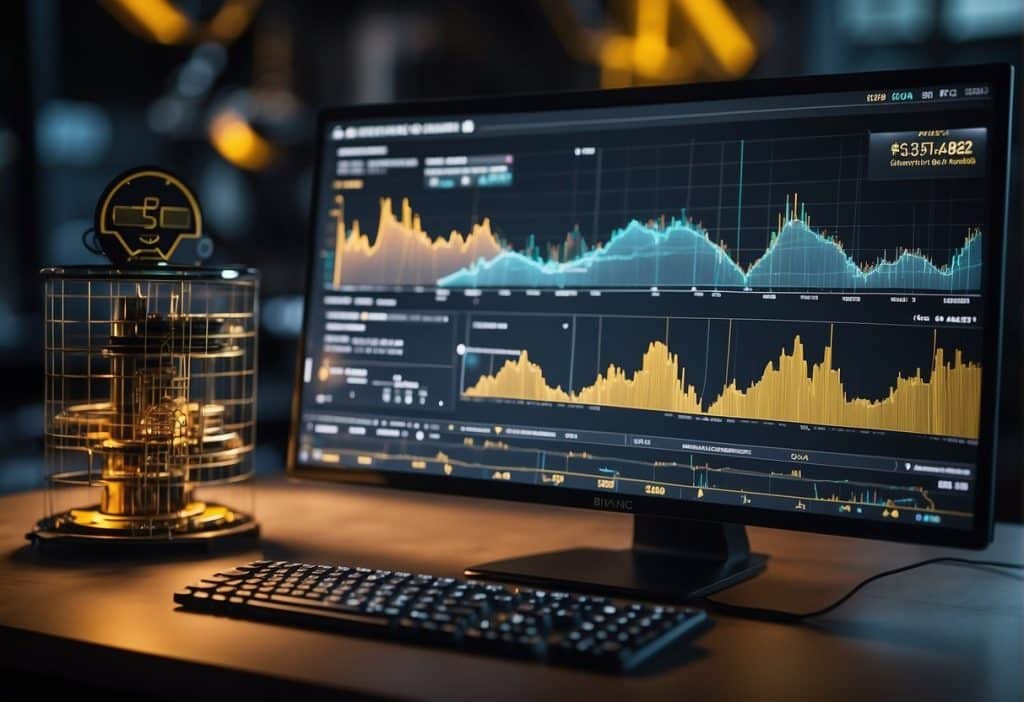
To embark on mining with Binance, you’ll need to set up a Binance account, create a mining account, and configure your mining pool settings. This preparatory work is essential to join the Binance Pool and start earning from your mining activities.
Creating a Binance Account
Before you can mine on Binance Pool, you must first register for a Binance account. Start by visiting the Binance website and follow their account creation process. Make sure you have a valid email address and secure password at hand, as you’ll need these to log in and access your account. Safety measures, including two-factor authentication (2FA), are recommended to protect your account.
Setting up a Mining Account
Once you have a Binance account, the next step is to create your mining account. Use your Binance log in details to access the “Finance” section and navigate to “Binance Pool. Here, you can create up to 100 mining accounts, allowing you to manage multiple miners or mining setups separately. When naming each mining account, choose a unique name that will make it easy to identify and manage your different mining activities.
Mining Pool Configuration Guide
Configuring your mining pool is a critical step that involves connecting your mining equipment to the Binance Pool. This configuration necessitates knowing specific details about your miner, such as IP address and other hardware-specific information. Below is a simple guide to help you with the configuration:
- Obtain the necessary server URL and port number from Binance Pool.
- Enter these details into your mining device’s configuration page.
- Specify your Binance Pool mining account name as the worker ID in your mining device’s settings.
With these steps completed, your mining equipment will be connected to the Binance Pool, and you can start monitoring your mining performance and earnings through the Binance Pool dashboard.
Mining Technologies
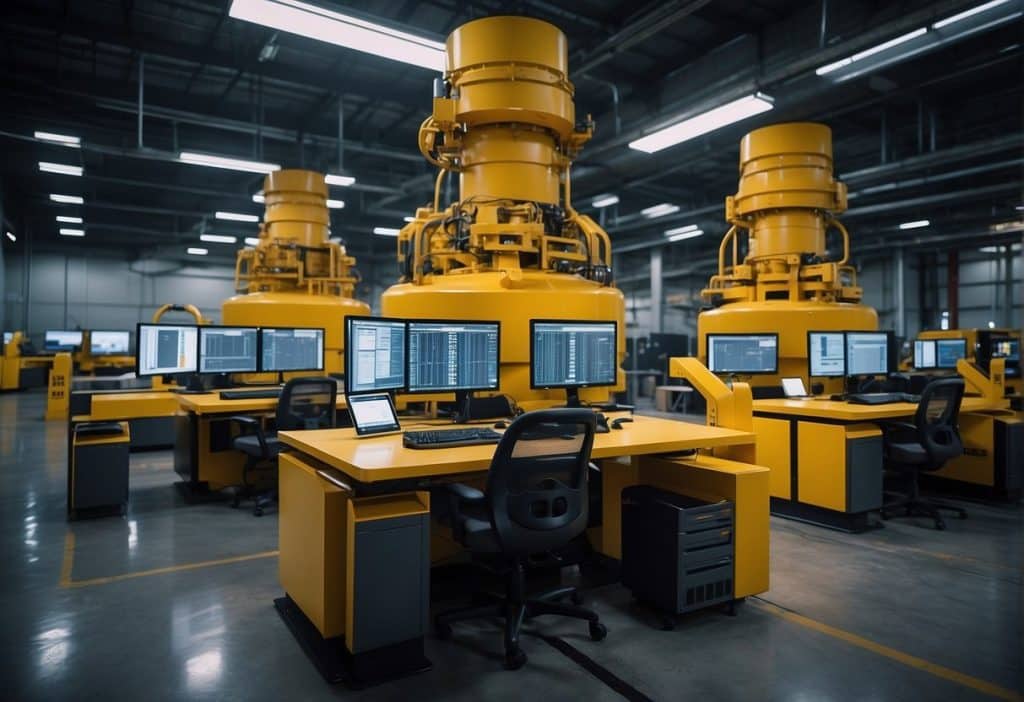
In the realm of cryptocurrency, mining technologies are crucial for the verification and addition of transactions to the blockchain. Your understanding of this technology will largely influence the effectiveness and profitability of your mining endeavors.
Basics of Mining Equipment
Mining equipment is the cornerstone of the cryptocurrency mining process, enabling the complex computation of hashes. The primary purpose of this equipment is to solve cryptographic puzzles, thereby securing the network and processing transactions.
CPU, GPU, and ASIC Mining
Initially, Central Processing Units (CPU) were used for mining cryptocurrencies, due to their availability in common personal computers. However, they are significantly slower compared to other mining hardware.
Graphics Processing Units (GPU) raised the bar with their ability to handle complex calculations simultaneously, making them more efficient for mining than CPUs. GPUs are particularly popular for their flexibility in mining different cryptocurrencies and their balance of power and energy consumption.
Application-Specific Integrated Circuits (ASIC) are the pinnacle of mining technology and are designed specifically for mining a particular cryptocurrency. These devices offer the highest hashrate—a measure of mining power—in comparison to CPU and GPU setups, resulting in higher efficiency and profitability.
The following table provides a comparative overview of the different types of mining hardware:
| Hardware Type | Relative Speed | Energy Efficiency | Flexibility |
|---|---|---|---|
| CPU | Low | Low | High (multiple coins) |
| GPU | Medium | Moderate | High (multiple coins) |
| ASIC | High | High | Low (specific coin) |
Understanding Hashrate
Your hashrate signifies the speed at which your mining rig can process and solve complex cryptographic puzzles. It’s measured in hashes per second, with higher rates indicating stronger and more efficient mining performance. Hashrate directly impacts your chances of successfully mining a block and earning mining rewards. Choosing the right combination of hardware significantly affects your hashrate and, in turn, the profitability of your mining activities.
Proof of Work and Mining
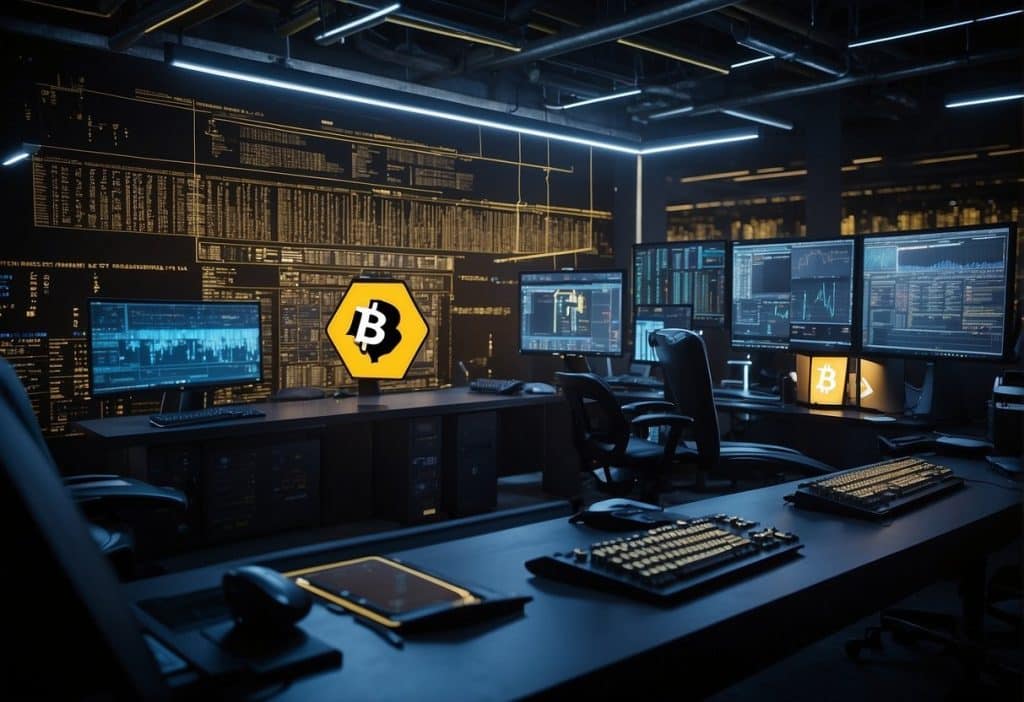
In the landscape of cryptocurrency mining, Proof of Work (PoW) plays a fundamental role. It serves as the backbone for securing networks such as Bitcoin and is employed by miners competing to validate transactions and create new blocks.
Bitcoin Mining and PoW
Bitcoin mining is the process by which new bitcoins are entered into circulation. It’s an essential component of the maintenance and development of the blockchain ledger. Mining involves solving complex cryptographic puzzles to discover a new block, which is added to the blockchain.
Miners compete to solve these puzzles using their computing power. The first miner to solve the puzzle gets the right to add the block to the blockchain and is rewarded with bitcoins. This reward not only serves as an incentive to mine but also introduces new bitcoins into the system. Here’s a brief overview of the process:
- Miners verify 1 megabyte (MB) of transactions, known as a “block.”
- To add a block to the blockchain, miners must solve a complex cryptographic puzzle through a process referred to as Proof of Work.
- Proof of Work is essential in preventing double-spending without the need for a trusted third party.
Through PoW, Bitcoin ensures security and consensus in a decentralized manner.
Consensus Algorithms and Security
Consensus algorithms are fundamental to the functioning of blockchain networks, allowing for agreement on the state of the blockchain. Proof of Work is one of these consensus mechanisms which underpin the security of networks like Bitcoin. It requires a significant amount of effort from the miners and in turn makes the network secure against attacks and fraud.
The security guaranteed by PoW stems from the enormous amount of computational power required to conduct the mining process. It is this requirement that makes tampering with the blockchain both difficult and expensive. Here’s what you need to know about these algorithms:
- PoW demands a large amount of processing power, which for Bitcoin, involves a global network of miners.
- It’s not just about security; these consensus algorithms also ensure that all Bitcoin transactions are verified and irreversible once added to the blockchain.
In conclusion, Bitcoin mining and the Proof of Work consensus algorithm are instrumental in validating transactions and ensuring the security and functionality of the Bitcoin network. Without these, the trustless and distributed nature of cryptocurrencies would not be possible.
Rewards and Earnings
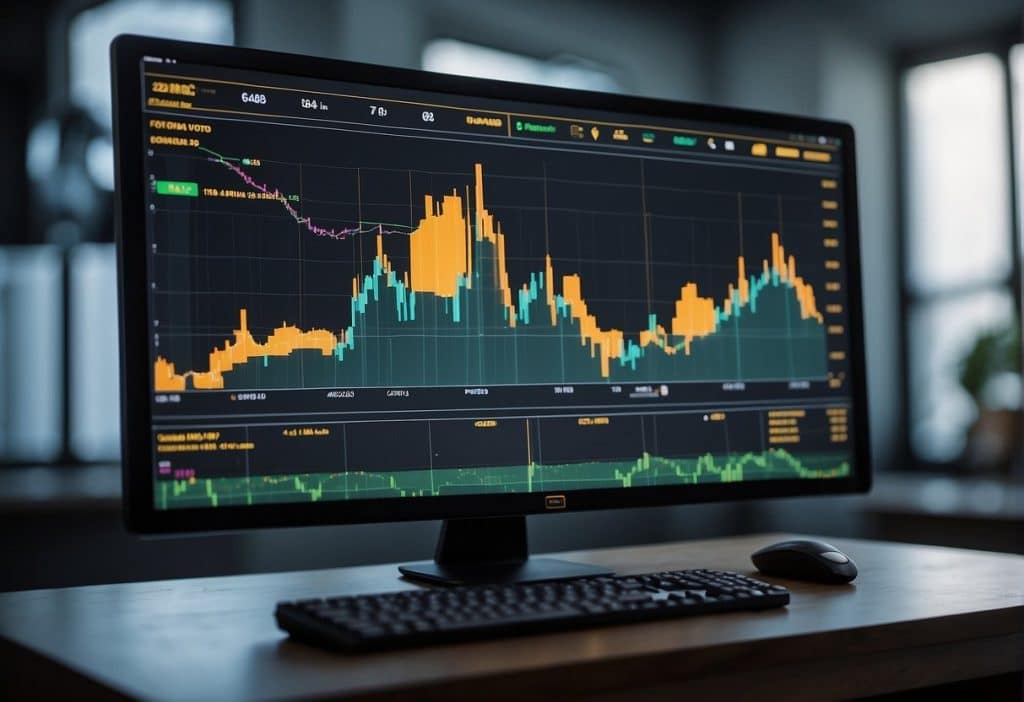
In the realm of cryptocurrency, Binance offers various avenues to increase your holdings through mining. Understanding your potential rewards and earnings is crucial for making informed decisions in the mining process.
Mining Rewards Explained
When you mine on Binance, rewards are distributed for successfully contributing to the blockchain network. These incentives come from two sources: block rewards, which are new coins minted with each new block, and transaction fees, paid by users for processing transactions. Binance utilizes different payout models, such as FPPS (Full Pay Per Share), PPS+ (Pay Per Share Plus), and PPS (Pay Per Share), each influencing your earning potential by considering factors like transaction fees and the overall stability of payouts.
Calculating Mining Income
To calculate your potential mining income, consider the following critical variables:
- Mining difficulty: The complexity of the mathematical problem miners solve.
- Block reward: The number of new coins distributed per block mined.
- Hash rate: Your mining equipment’s processing power.
- Electricity costs: The expense of powering your mining setup.
- Pool fees: Charges applicable for participating in a mining pool. Binance provides tools like mining profitability calculators to estimate your earnings by integrating real-time data such as mining difficulty and coin prices.
Binance Funding Wallet and Earnings
Your Binance Funding Wallet serves as the repository for your mining earnings. Binance disburses rewards directly into this wallet, often with instant settlements that allow you to access and utilize your funds without delay. Managing your funding wallet effectively is key to optimizing your earnings, as it consolidates your mining income and enables seamless transitions between mining and trading on the platform.
The Mining Process
In the context of Binance and cryptocurrency mining, your journey from setting up transactions to ultimately receiving confirmation involves complex computational work. Understanding how your transactions become confirmed and the role of mining difficulty and rewards is crucial in appreciating the mining mechanics.
From Transaction to Confirmation
When you initiate a transaction on Binance, it first goes into a memory pool, waiting for miners to pick it up. Miners collect these pending transactions, verify them, and group them into a block. To add this block to the blockchain, miners must solve a cryptographic puzzle, which requires a significant computational effort. Only when the correct hash— a unique signature of fixed size —is discovered, the block is deemed valid, and the transaction is confirmed.
Mining Difficulty and Block Rewards
Mining difficulty refers to how hard it is for miners to generate the correct hash for the block and thus confirm transactions. This difficulty adjusts to ensure that the time it takes to mine a block remains consistent despite fluctuations in mining power. The successful miner receives a block reward, which consists of newly minted coins and the transaction fees from all transactions in the block. This incentivizes miners to contribute their computational power to the network.
| Difficulty Level | Block Time Target | Block Reward |
|---|---|---|
| High | 10 minutes (Bitcoin) | 6.25 BTC (as of early 2023) |
| Medium | Variable | Depends on the blockchain |
| Low | Variable | Depends on the blockchain |
Mining Pools and Share Submission
A mining pool is a group of miners who combine their computational resources to increase the chances of mining a block. When you join a mining pool like Binance Pool, you contribute to a larger pool of processing power. Rewards are then shared among pool members, proportionally to the amount of computational power each contributed. When you are a part of a mining pool, you must submit proof of your computational work, also known as shares, to be eligible for a portion of the mined block’s rewards.
Blockchain Fundamentals

The fundamental aspects of blockchain you need to comprehend involve the structure of the technology and the cryptographic techniques that ensure integrity and security. Let’s explore how blockchains function and the significance of Merkle trees and block hashes in maintaining a blockchain’s reliability.
Deciphering Blockchain Technology
Blockchain is an innovative ledger technology that provides a secure and decentralized way to record transactions. Imagine it as a continuously growing list of records, called blocks, which are linked and secured using cryptography. Each block typically contains a cryptographic hash of the previous block, a timestamp, and transaction data.
- Decentralization: Unlike traditional records kept by a singular authority, blockchain is distributed across a network of computers, ensuring no single point of failure.
- Public Ledger: Every participant on the blockchain has access to the entire database and its complete history. No participant can alter information in any block without altering all subsequent blocks, which requires consensus from the majority of the network.
Merkle Trees and Block Hashes
The integrity of a blockchain is maintained through the use of Merkle trees and block hashes. These are crucial cryptographic components that provide the backbone for blockchain’s trustless nature.
Merkle Trees:
- This data structure helps in efficiently summarizing and verifying the integrity of large datasets.
- Transactions are hashed and then paired, hashed again, and the process repeats until a single hash remains, the Merkle root, which is stored in the block header.
Block Hashes:
- A block hash is a unique identifier derived from hashing the block header, which includes the Merkle root.
- The hash function transforms the header into a short, random sequence of numbers and letters – a fingerprint of the block’s data.
By understanding blockchain’s fundamental components and their functions, you gain insight into why this technology is considered tamper-resistant and secure. Here’s a simple comparison between the two critical concepts:
| Feature | Merkle Tree | Block Hash |
|---|---|---|
| Purpose | Summarizes all the transactions in a block. | Uniquely identifies a block and links it to its predecessor. |
| Security | Ensures each transaction is tamper-evident. | Secures the block and ensures it has not been altered. |
| Efficiency | Facilitates quick and efficient verification of transactions | Enables faster validation and propagation of the block. |
| Change Impact | Altering any transaction will change the Merkle root. | Altering the block header results in a new block hash. |
The most critical takeaway from understanding these building blocks is how they work together to ensure the immutability and accountability of every transaction on the blockchain.
Mining Strategies and Considerations
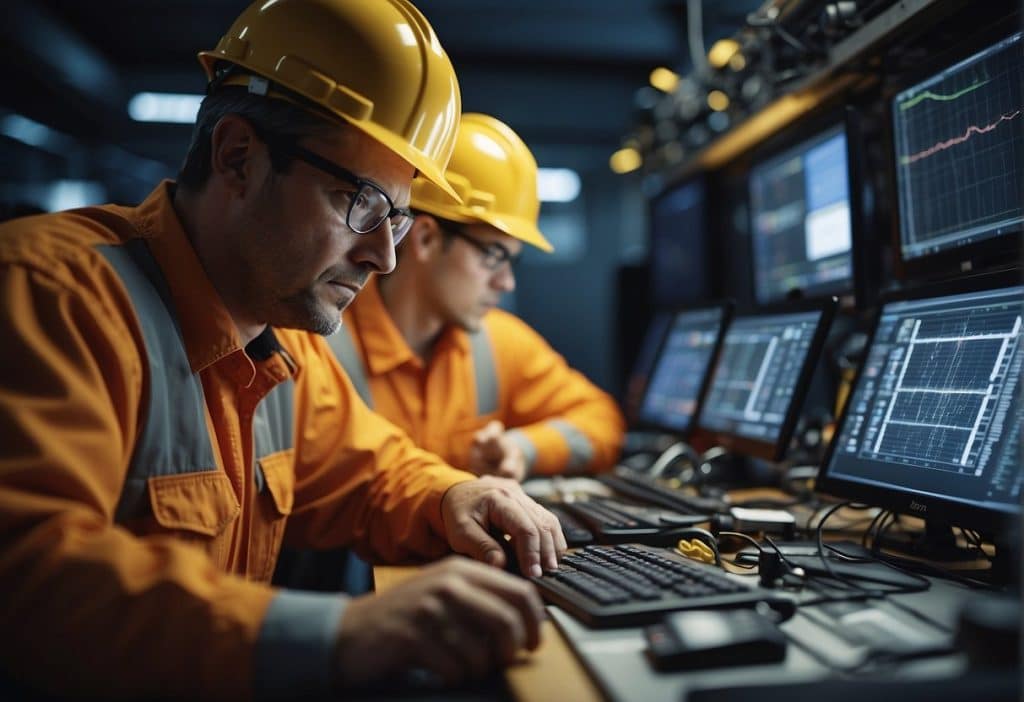
Exploring the right mining strategies and considering the operational aspects can significantly impact your ability to earn from cryptocurrency mining. Your approach to mining on Binance will be influenced by factors that affect profitability and the support available for different mining methods.
Pool vs. Solo Mining
Pool Mining:
- When you connect to a mining pool like Binance Pool, you combine your hardware’s processing power with that of other miners.
- Profits are distributed based on each miner’s contribution to the pool’s hash rate.
Pros:
- Consistent payouts
- Lower entry barriers
Cons:
- Smaller, periodic rewards
- Pool fees apply
Solo Mining:
- Solo mining means you are mining independently.
- The entire block reward is yours if you successfully mine a block.
Pros:
- Potential for larger payouts
- No pool fees
Cons:
- Significantly less frequent rewards
- Requires considerable processing power
Profitability and Losses
Calculating Profitability:
Your profitability is influenced by several factors, including:
- Hash rate: The speed at which your system can mine.
- Electricity costs: Can vary greatly, reducing profit margins.
- Pool fees: Typically around 2.5% with Binance Pool.
- Cryptocurrency value: Fluctuates and impacts the value of rewards.
Understanding Losses:
- Operational costs: High electricity prices can lead to losses.
- Market volatility: Sudden drops in cryptocurrency value can make mining unprofitable.
You must balance the potential to earn against the risk of incurring losses. Deciding on a mining strategy is key and should align with your resources and risk tolerance. Support from your chosen mining platform, like Binance, can provide additional stability and resources as you navigate your mining journey.
Binance’s Cryptocurrency Support
Binance offers a comprehensive ecosystem for mining and trading various cryptocurrencies. The platform supports a variety of coins for mining and provides integrated services to manage and use your mined assets effectively.
Supported Coins for Mining
Binance Pool supports a range of cryptocurrencies for mining, including major coins like Bitcoin (BTC) and Bitcoin Cash (BCH). The pool deploys the SHA256 algorithm, where miners can contribute their computational power. Here’s a basic table that showcases supported coins and their respective algorithms:
| Cryptocurrency | Algorithm |
|---|---|
| Bitcoin (BTC) | SHA256 |
| Bitcoin Cash (BCH) | SHA256 |
Trading and Finance on Binance
After mining, you can trade your cryptocurrencies on Binance. The platform is known for its extensive trading pairs and liquidity. Additionally, Binance’s financial services include various options like spot trading, futures, and savings accounts that can help you manage and grow your assets. If you mine Bitcoin, you can easily move into trading or using financial services within Binance’s ecosystem.
Conversion and Trading

Upon successfully mining cryptocurrencies, your next steps are typically converting mined coins into other types of cryptocurrencies or fiat, trading on the Binance platform, and buying crypto directly. The following subsections will provide you with specific information on each process.
Converting Mined Coins
Once you have mined coins, you may use Binance Convert to exchange them for different cryptocurrencies or fiat currencies. This service allows for simple conversions without the need to navigate the typical trading interface. These conversions are executed at a live price based on current market conditions with zero fees attached.
Trading Pairs on Binance
Binance offers a multitude of trading pairs that allow you to trade between different cryptocurrencies. Here’s a brief look at the trading process:
- Select a trading pair: Choose the specific pair relevant to the cryptocurrency you wish to trade.
- Execute a trade: Trades are processed instantly, ensuring you can react swiftly to market movements.
Buying Crypto with Binance
To buy crypto on Binance, you have options:
- Use Binance Convert: For immediate conversion from fiat to crypto.
- Spot Wallet: After trading or converting, your crypto appears here allowing for further investment or trading activities.
Keep in mind that trading cryptocurrencies involves risk and prices can be volatile. Always ensure you’re aware of and comfortable with the risks associated with crypto trading.
Advancements in Mining Technology
The rapidly evolving mining tech landscape is dramatically changing how you might mine cryptocurrency. Innovations in hardware and the advent of cloud mining services are enhancing efficiency and making mining more accessible.
Innovations in Mining Hardware
To participate in cryptocurrency mining, the prowess of your mining hardware directly impacts your success. Advances in hardware technology have specifically improved hashrate, which is the measure of the computational power per second used when mining. As hardware evolves, miners can calculate and solve cryptographic hashes more quickly, hence increasing their chances of earning cryptocurrency. Here’s a glance at the changes:
ASIC Miners: Application-Specific Integrated Circuits (ASICs) are the pinnacle of mining technology, designed explicitly for cryptocurrency mining. These deliver significant hashrates and energy efficiency compared to their predecessors, the CPUs and GPUs.
Efficiency Boost: Modern ASICs are not just more powerful; they’re also more energy efficient. This means you get more mining power for each watt of power consumed, reducing your overall operational costs.
Cloud Mining and Its Impact
Cloud mining enables you to mine cryptocurrencies without the need for physical hardware by purchasing a share of the mining power from remote data centers. Here are essential insights on cloud mining:
Accessibility: Cloud mining can lower the entry barrier for you if you are interested in mining but reluctant to invest in expensive and complex hardware. You can start mining by procuring a share of hashrate from cloud mining providers.
No Maintenance Worries: You are relieved from the maintenance of physical mining rigs and the associated heat and noise, by leveraging cloud mining services.
Binance Cloud Mining: Binance, a prominent figure in the cryptocurrency exchange sector, has introduced a cloud mining product that reflects its commitment to this innovative mining solution. This new service could be beneficial if you’re looking for a straightforward entry point into mining.
| Pros of Cloud Mining | Cons of Cloud Mining |
|---|---|
| No upfront hardware cost | Profits depend on cloud mining service terms |
| No technical knowledge required | Limited control over the mining operation |
| No maintenance or setup hassle | Potential for scams or inefficiency |
| Flexible and accessible | Market fluctuations can impact profitability |
By staying informed about these advancements, you can make educated decisions about how you approach cryptocurrency mining, whether you prefer hands-on hardware management or the simplicity of cloud mining services. Remember to thoroughly research and vet any cloud mining service before investing, as the market is not without its risks.
Additional Mining Concepts
In cryptocurrency mining, certain underlying mechanics determine the efficiency and profitability of the process. Understanding these mechanisms is crucial in maximizing your participation in mining pools.
Mining Pool Shares and Unconfirmed Transactions
When you participate in a mining pool, your contributions are measured in shares. A share is a potential solution to the cryptographic problem that the network sets out with each new block in the blockchain. These shares represent your portion of the work done within the pool. However, not all shares contribute to finding that solution—some contain unconfirmed transactions. An unconfirmed transaction is a transaction that has not yet been included in a block and confirmed by the network.
Depending on the payment scheme of your mining pool, shares with unconfirmed transactions might still earn you rewards. Here’s a simple table illustrating types of shares within a mining pool:
| Share Type | Description |
|---|---|
| Accepted Share | A share that the pool deems as a valid contribution to the block effort. |
| Rejected Share | A share that is discarded due to being invalid or submitted too late. |
| Share with Unconfirmed TXN | A share that includes unconfirmed transactions yet to be approved. |
Understanding the Memory Pool
The memory pool, often called the mempool, is where all unconfirmed transactions await confirmation by network participants (miners). As a miner, your equipment selects transactions from the mempool to form a new block. Factors like transaction fees and size influence which transactions get selected first. Transactions with higher fees are typically prioritized as they potentially result in more lucrative rewards once the block is mined successfully.
Mining pools have their strategies for selecting transactions from the mempool, often aiming to optimize for the greatest return. By understanding the mempool dynamics, you can better assess how your preferred mining pool operates and what earnings you could expect from your mining endeavors.
Regulatory and Ethical Perspectives
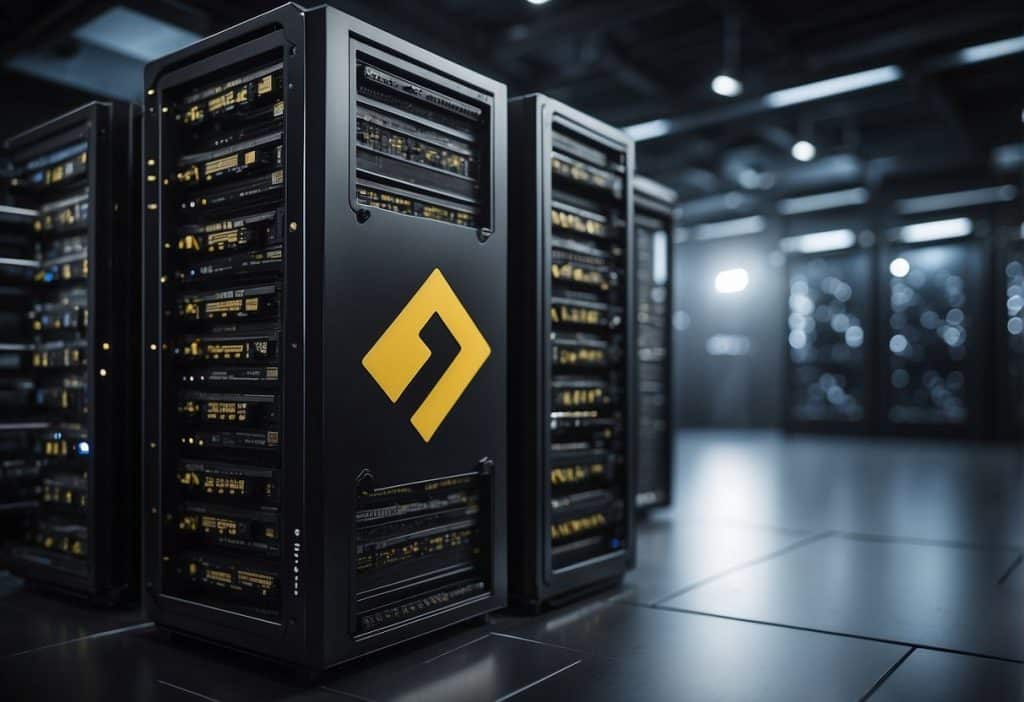
In this section, you’ll explore the regulatory frameworks that govern cryptocurrency mining and the environmental implications associated with this activity. These aspects are vital for understanding the complex interplay between innovation in blockchain technology and societal standards.
Cryptocurrency Mining Regulations
Cryptocurrency mining is subject to a patchwork of regulations that can vary significantly depending on geographical location. You, as a miner or investor, need to be mindful of:
- National and Regional Laws: Some countries have developed specific laws that either restrict or allow mining activities. It’s essential to check your local laws to ensure compliance.
- Financial Oversight: Entities like the U.S. Securities and Exchange Commission (SEC) and the Commodity Futures Trading Commission (CFTC) are involved in oversight and can impact mining operations based on their determinations on certain crypto-assets.
Environmental Considerations of Mining
The environmental impact of cryptocurrency mining has been a topic of growing concern. Here’s what you need to be aware of:
- Energy Consumption: Blockchain transactions and the mining process can require a significant amount of electricity. The energy source and its sustainability are critical factors in the overall environmental impact.
- Carbon Footprint: Mining operations have varying degrees of carbon emissions, mostly tied to their energy sources. The push for greener mining solutions is becoming more prevalent within the community.
By keeping abreast of the latest regulations and ethical standards, you can ensure that your involvement in cryptocurrency mining aligns with both legal requirements and societal values.
Evolutions in Mining
In the dynamic landscape of cryptocurrency, you’ve witnessed significant advances in mining technology and pivotal moments like Bitcoin halving events.
Bitcoin Halving Events and Impact
Bitcoin’s protocol includes an event known as “halving,” which occurs every 210,000 blocks, roughly every four years. During this event, the reward for mining new blocks is halved, reducing the supply of new Bitcoin entering the market. The last halving event occurred in 2020, where the reward dropped from 12.5 to 6.25 bitcoins per block.
Key Impacts of Halving Events:
- Scarcity: Halving reduces the rate at which new Bitcoin is created, thus aiming to induce scarcity and potentially drive up the cryptocurrency’s value over time.
- Mining Profitability: Post-halving, your immediate mining rewards in terms of Bitcoin are reduced by half, which could impact profitability if price doesn’t increase to compensate.
- Network Security: As rewards diminish, there’s a hypothetical risk that some miners may exit the industry, potentially affecting the network’s hash rate and security, though historically, the network has remained robust.
Historical Halving Data:
| Halving Event | Date | Block Reward Before | Block Reward After |
|---|---|---|---|
| First | 28/11/2012 | 50 BTC | 25 BTC |
| Second | 09/07/2016 | 25 BTC | 12.5 BTC |
| Third | 11/05/2020 | 12.5 BTC | 6.25 BTC |
Each halving event ushers in a new era for Bitcoin mining. Miners must adjust to the new reward structure, typically seeking more efficient hardware or cheaper power sources to maintain or improve profitability. As you continue to mine or invest in Bitcoin, closely monitor the implications of these halving events to better understand their role in the evolution of mining.
Security and Mining
When engaging in Binance mining, the priority is to protect your assets while ensuring the safety and integrity of mining operations. It’s critical to understand the tools and strategies in place that conserve the security of your cryptocurrency investments as well as the mining process.
Protecting Your Mining Assets
To safeguard your mining interests, it is imperative to use secure and unique passwords for your Binance account, in addition to enabling two-factor authentication (2FA). Make sure you are aware of the following best practices to enhance the security of your mining assets:
- Cold Storage: Keep a significant portion of your assets in offline wallets—known as cold storage—to minimize the risk of online breaches.
- Regular Updates: Ensure your mining software and hardware firmware are always up to date with the latest security patches.
Safety in Mining Operations
Your safety in mining operations is contingent on maintaining secure network protocols and utilizing equipment properly. Here are the essential security measures you need to put into place:
- Secure Internet Connection: Always use a VPN or a secure network when accessing your mining equipment remotely.
- Antivirus Software: Employ robust antivirus software to protect your systems from malware that could compromise mining operations.
Ensure you are constantly monitoring your mining environment for any unusual activities, and stay informed with the latest security protocols to defend against evolving cryptographic threats.
Enhancing Your Binance Mining Experience
Maximizing your success in Binance Mining involves two fundamental strategies: optimizing your mining setup and engaging with a robust mining community.
Optimizing Your Mining Setup
Your mining rig is the backbone of your mining operations. To ensure its profitability, it’s essential that you configure your setup to maximize the hash rate while maintaining energy efficiency. Binance offers Binance Smart Pool, a service that automatically switches your hash rate to mine the most profitable cryptocurrency using the same algorithm. This not only optimizes your mining efforts but can also lead to an increase in mining revenue. Keep your system updated and maintain a balance between power and performance.
| Factor | Description | Tips for Optimization |
|---|---|---|
| Hash Rate | Measures the power of the mining rig. | Upgrade hardware to improve hash rate. |
| Electricity Consumption | The amount of power used by the mining setup. | Use energy-efficient components. |
| Mining Pool Participation | Joining a pool to combine mining efforts. | Choose Binance Pool for integrated services. |
The Importance of a Mining Community
A mining community plays a pivotal role in enhancing your Binance Mining experience. Being part of a community like Binance Pool provides you with support and shared knowledge, which can be invaluable, especially for new miners. It also allows you to contribute to the pool’s hash rate, increasing the chances of successful mining and block creation. Shared resources and community help can guide you in troubleshooting and honing your mining strategies.
- Support: Access to a responsive support system and a pool of knowledge from experienced miners.
- Shared Resources: Leverage collective investments in more powerful mining setups.
- Knowledge Sharing: Stay updated on the latest mining trends and technologies through community interaction.
By focusing on these areas, you’re setting up a solid foundation for a profitable and sustainable Binance mining venture.
Troubleshooting Common Mining Issues
When mining on platforms like Binance, encountering issues with hashrate fluctuations and configuration errors can be common. Understanding how to navigate these problems will help ensure that your mining operation runs smoothly.
Solving Hashrate Fluctuation Problems
If you’re experiencing unexpected changes in your hashrate, it could be due to hardware malfunctions or network instability. First, inspect your hardware for any signs of damage or overheating. Ensure all connections are secure and that your mining rig is functioning within its normal temperature range.
Sometimes, the issue might stem from the mining pool’s end. Check the pool’s status page for any reported downtimes or maintenance which could temporarily affect the hashrate.
Dealing with Configuration Errors
Configuration errors can occur if the mining software is not set up correctly. Verify all settings, including server addresses, ports, and worker names, to confirm they match the details provided by Binance Pool. Remember that even a small typo can prevent you from connecting to the pool correctly.
In cases where errors persist, reviewing the mining software’s documentation or seeking help from Binance Support may provide you with a detailed walkthrough on how to configure your mining rig accurately for optimal performance.
Glossary of Mining Terms
When you’re navigating the world of Binance mining, it’s vital to understand the common terms used. Here’s a quick guide:
- Nonce: A nonce (number used once) is an arbitrary number added to a block during mining that can only be used once. It’s critical in the mining process to help miners find a block hash that meets the network requirements.
- Coinbase Transaction: This is the first transaction in a block and is created by a miner. It allows the miner to collect the block reward and any transaction fees from users sending transactions.
- Candidate Block: Before a block is confirmed, it is known as a candidate block. It includes transactions that are waiting to be added to the blockchain.
- Blockchain: A blockchain is a digital ledger recording all transactions. It’s composed of individual blocks chained together in sequential order.
- Block Hash: This is a unique identifier for a block, which is created by hashing the block’s header twice through the SHA-256 algorithm used by Binance.
- Identifier: In the context of Binance mining, an identifier can refer to the unique string that identifies a transaction.
- Outputs: This refers to the destination addresses within a transaction where the cryptocurrency is sent. It’s the result of a successful mining process.
- Trial and Error: Mining involves a lot of trial and error to find the correct nonce that will result in an acceptable block hash.
- Confirmed Block: Once a block has been added to the blockchain, it is confirmed, meaning that the transactions within it are officially recorded and irreversible.
Remember, mining is a complex process that requires patience and a good grip on these terms. Understanding them will help you effectively participate in the Binance mining ecosystem.
Frequently Asked Questions
Before diving into the specifics, it’s important to understand that Binance Mining offers a platform for various mining activities and provides resources for both seasoned and novice miners.
How can one start mining on the Binance platform?
To begin mining on the Binance platform, you need to select a compatible mining machine, such as WhatsMiner, Antminer, Avalon Miner, or Innosilicon miner. Purchase this hardware from the manufacturer’s official website, then connect it to the Binance Mining Pool by configuring your mining machine with the Binance Pool mining address and your account details.
What are the associated fees with Binance mining?
Binance mining has associated fees which can vary depending on the cryptocurrency you are mining. It’s important to review the latest fee structure on the Binance website for accurate information as fees can change based on the market conditions and pool requirements.
What is the expected reward for mining through Binance?
The reward for mining on Binance depends on several factors, including the type of cryptocurrency, the total hashrate of the Binance Mining Pool, and the performance of your mining hardware. Binance utilizes FPPS (Full Pay Per Share) and PPS+ (Pay Per Share Plus) payout methods, which distribute transaction fees and block rewards respectively to miners. Consult the Binance Mining Pool page for current reward estimates.
Which apps are recommended for mining with Binance?
For managing your mining activities on Binance, the Binance App is recommended. It integrates the Mining Pool functions enabling you to send, receive, and manage your mining income.
Can you mine directly on a mobile device with Binance?
It’s not currently possible to mine directly on a mobile device through Binance, as mining typically requires substantial computational power that exceeds the capabilities of mobile devices.
Where can I find the Binance Mining calculator?
The Binance Mining calculator can be found on the Binance website under the mining section. This tool helps you estimate potential earnings based on your hashrate, power consumption, and electricity costs.
